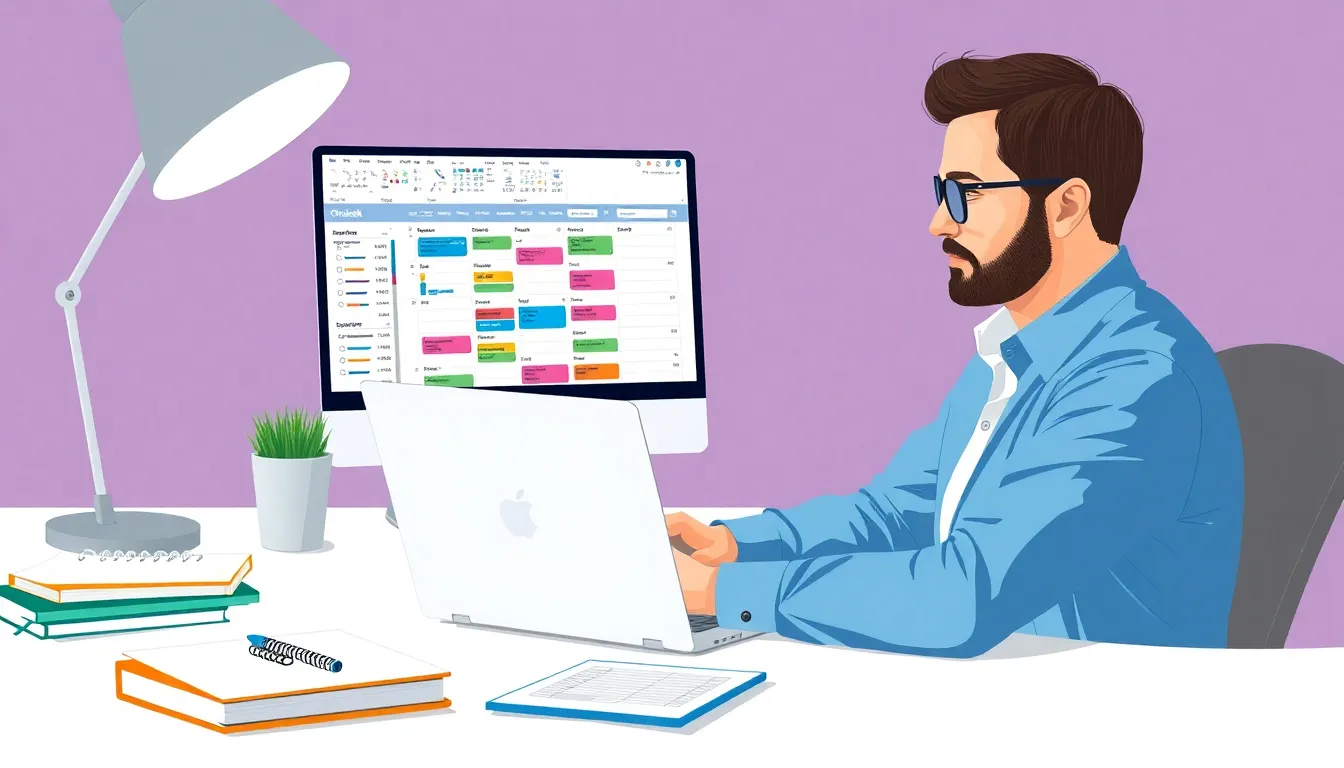Table of Contents
ToggleIn today’s fast-paced world, juggling emails, meetings, and deadlines can feel like trying to tame a caffeinated squirrel. But fear not! With the right Outlook productivity hacks, anyone can transform their chaotic inbox into a well-oiled machine. Imagine breezing through your tasks like a pro while still having time to enjoy that extra cup of coffee—or maybe even a donut.
Overview of Outlook Productivity Hacks
Outlook productivity hacks enhance efficiency and organization in daily tasks. These techniques streamline email management, manage calendar events, and optimize to-do lists. Users benefit from features such as rules, categories, and Quick Steps, which simplify repetitive tasks.
Utilizing rules allows automatic sorting of emails based on specific criteria, reducing inbox clutter. Categories help prioritize messages, tasks, and events visually, enabling users to focus on what’s most important. Quick Steps automate multi-step processes with a single click, saving time on routine actions.
Keyboard shortcuts significantly improve navigation speed within Outlook. For example, pressing Ctrl + R replies to an email immediately, while Ctrl + N creates a new message without using the mouse. Knowing these shortcuts can drastically reduce time spent on basic functions.
Additionally, the Focused Inbox feature segregates essential emails from less important ones. This tool makes it easier to address high-priority messages first. Calendar integrations also allow scheduling and reminders directly linked to tasks and emails, ensuring deadlines are met without missing key meetings.
Using the search function effectively can also yield significant time savings. Searching by sender, date, or keywords finds relevant information quickly, eliminating the need to sift through countless emails. Setting aside specific time blocks for handling emails can further boost productivity by minimizing distractions.
Incorporating these hacks into everyday workflows transforms how individuals interact with Outlook, leading to better time management and improved focus on strategic tasks. Adopting these strategies equips users with tools necessary for effective email and calendar management.
Time Management Techniques

Effective time management incorporates various tools within Outlook that streamline scheduling and task completion. Leveraging these features boosts productivity and keeps tasks on track.
Utilizing Calendar Features
Calendar features in Outlook facilitate organization and enhance time allocation. Color-coded categories allow users to visually prioritize tasks and appointments. Integration with other tools, like Microsoft Teams or Zoom, simplifies scheduling and joining meetings. Recurring appointments help maintain long-term commitments effortlessly. By reviewing daily and weekly agendas, individuals can allocate their time effectively.
Setting Reminders and Tasks
Setting reminders ensures that important deadlines do not slip through the cracks. Customizable notifications alert users in advance, promoting proactive task management. Task lists can be created directly in Outlook, integrating to-do items seamlessly with email and calendar functions. Collaboration features allow teams to assign tasks to specific members, fostering accountability. Streamlining task management results in improved focus and accomplishment of goals.
Email Management Strategies
Email management is essential for maintaining focus and efficiency in a busy work environment. Strategies for organizing emails can significantly increase productivity and reduce stress.
Organizing Your Inbox
Organizing your inbox contributes to better email management. Start by implementing the Focused Inbox feature. This tool prioritizes important emails, allowing less critical communications to stay in a separate tab. Regularly archiving old emails helps keep the main inbox clear. Establish specific times to check emails, reducing constant distractions. Unsubscribe from unnecessary newsletters and promotional emails to minimize clutter. Set rules within Outlook to automatically sort incoming emails into designated folders. These methods collectively enhance visibility, making it easier to locate emails quickly.
Using Categories and Folders
Using categories and folders in Outlook promotes efficiency and organization. Color-coded categories allow for quick visual identification of task priorities. Assign categories to projects or themes for easier navigation. Create folders for ongoing projects or individual clients, ensuring all related emails stay in one location. Additionally, utilize subfolders for further organization within main project folders. This structure supports maintaining focus while managing multiple tasks. Regularly reassess categories and folder structures to adapt to changing priorities. By streamlining email organization, users maximize their productivity and reduce time spent searching through emails.
Workflow Optimization Tips
Optimizing workflows in Outlook boosts efficiency significantly. Implementing strategic hacks can save time and increase productivity.
Automating Repetitive Tasks
Repetitive tasks consume significant time. Create rules to automatically sort incoming emails; this reduces clutter in the inbox. Use Quick Steps to automate common actions like forwarding emails or sending replies. Integrate scripts to execute multiple actions with a single click, simplifying workflows further. AI tools within Outlook can set calendar events or reminders. Many users benefit from scheduling recurring meetings, minimizing repetitive setup. These automation strategies eradicate mundane tasks, allowing focus on more critical responsibilities.
Customizing Quick Access Toolbar
Customizing the Quick Access Toolbar enhances accessibility. Users can add frequently used commands to streamline workflows. Prioritize tools like “New Email” or “Save” for easier access, saving valuable time. Drag and drop commands into the toolbar for instant visibility. Personalize the setup according to individual work habits; this leads to smoother navigation. Resizing the toolbar and organizing commands can improve usability. Adapt the display settings to make the most relevant options stand out. Implement these tweaks to optimize navigation and speed up daily tasks, driving productivity higher.
Collaboration Enhancements
Outlook offers various features that enhance team collaboration and streamline communication. Utilizing these features maximizes productivity and fosters better teamwork.
Scheduling Meetings Effectively
Scheduling meetings can become efficient through Outlook’s Calendar feature. Users can view colleagues’ availability directly, which simplifies finding suitable times. Integrating Teams or Zoom offers seamless meeting links, ensuring smooth transitions. Setting reminders helps attendees prepare and stay organized. Recurring meeting options eliminate the need for constant rescheduling, saving time in the long run. Utilizing the “FindTime” add-in streamlines the process further by allowing participants to vote on preferred times. Effective meeting scheduling ultimately leads to more productive discussions and improved collaboration.
Leveraging Shared Calendars
Shared calendars provide an excellent way to enhance team collaboration in Outlook. Team members can easily access project timelines, deadlines, and important events. Viewing multiple calendars side by side assists in managing overlapping commitments. Users can share their availability, ensuring everyone stays informed about schedule changes. Adding color-coded categories aids in visual prioritization, making it simple to identify tasks. This feature ensures transparency and encourages accountability within teams. Leveraging shared calendars fosters a cooperative work environment that enhances efficiency and promotes better outcomes.
Embracing Outlook productivity hacks can transform a chaotic work routine into a more manageable and efficient process. By implementing strategies like automatic email sorting and effective use of calendar features, individuals can reclaim valuable time and improve focus.
These tools not only streamline communication but also foster better collaboration among team members. With the right techniques in place, it’s possible to enhance overall productivity and create a more organized work environment. Adopting these hacks will empower users to tackle their tasks with confidence and enjoy a more balanced work-life dynamic.





